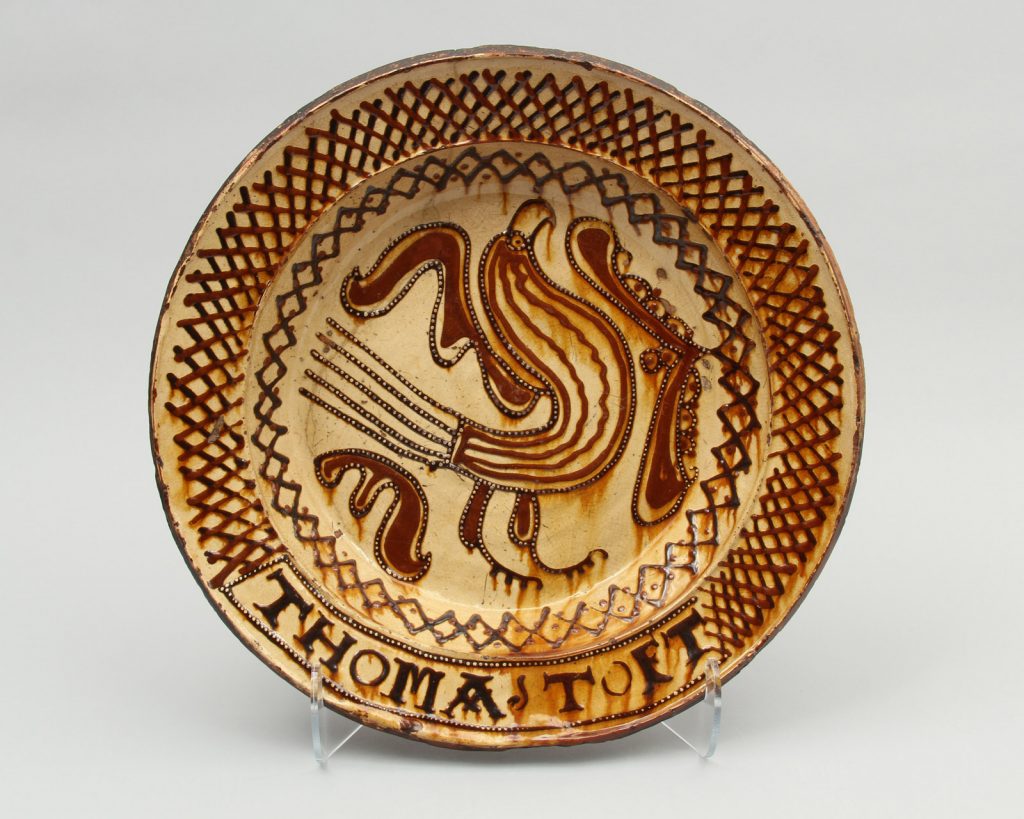Slip-decorated pieces, commonly known as slipware, were produced in the region of Staffordshire and Wrotham in Kent from the early 1660s to the eighteenth century. This type of earthenware is decorated with slip (coloured liquid clay), applied as relief decoration using a variety of techniques such as trailing and stamping. This resulted in bold and freely executed designs. Being more economical to produce than delftware and porcelain, slipware was accessible to a wider segment of society including the lower end of the middle class.
Part of the original gift made by George and Helen Gardiner, this small collection includes ornamental chargers and drinking vessels in shapes derived from metalwork. Some examples present inscriptions, indicating that they may have been commissioned to commemorate important life events, such as births and weddings.
1. Bird Dish (detail), England, possibly Staffordshire, possibly by Thomas Toft (d.1689), c.1690-1710, Gift of George and Helen Gardiner, G87.1.3
2. Bird Dish (detail), England, possibly Staffordshire, possibly by Thomas Toft (d.1689), c.1690-1710, Gift of George and Helen Gardiner, G87.1.3
3. Hound’s Head Stirrup Cup (detail), England, c. 1770s. Gift of Jean and Kenneth Laundy, G08.2.45
4. Charger (detail), France, Rouen, attributed to the Poterat manufactory, late 17th century, The Pierre Karch and Mariel O'Neill-Karch Collection, G15.8.1
5. Pair of Shoes (detail), England, possibly London, 1705-1715, Gift of George and Helen Gardiner, G83.1.549.1-2. Photographer: Toni Hafkenscheid
6. Dish with Scenes of the Abduction of Europa (detail), Italy, Faenza, Attributed to the Master of the Bergantini Bowl, c.1537, Gift of George and Helen Gardiner, G83.1.351
7. Sculpture of a Stove (detail), Switzerland, Winterthur, c.1650, The Hans Syz Collection, G96.5.418

